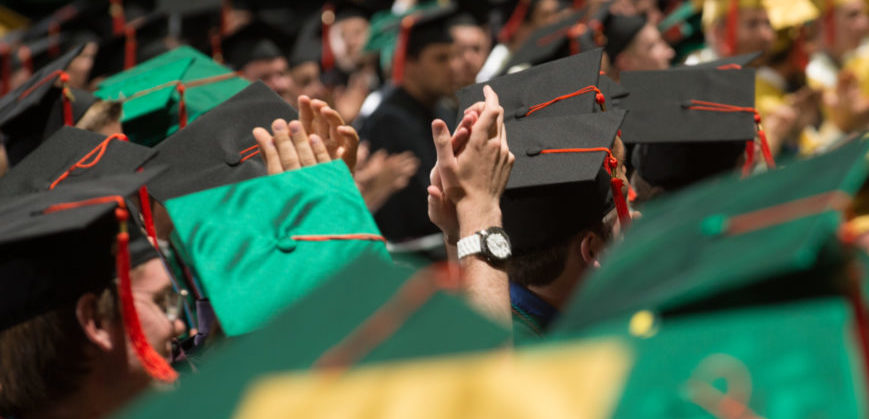
A new White House report on student debt affirms what Colorado State University’s president and other leaders in higher education have been saying publicly for years: Despite rising public concerns about college student debt loads, students at four-year public universities have lower average debt and are better able to repay those loans than students who attend other types of schools.
The report also makes the distinction that students at for-profit institutions have seen a greater increase in borrowing for education and account for a disproportionate proportion of loan defaults, especially among those who don’t complete their degrees. This nuance sheds new light on a national conversation about higher education that often lumps all types of institutions together rather than recognizing the significant differences in the value and outcomes students see at different types of schools.
The report released in July – Investing in Higher Education: Benefits, Challenges, and the State of Student Debt – says that while aggregate student debt in the U.S. has grown to $1.3 trillion, the investment for individuals typically yields large returns. But that ROI “varies substantially across individuals, institutions, and programs.”
The White House report identifies students at certain types of institutions – for-profits in particular – as major drivers of the highest debt and default figures, and moves past painting all of higher education with the same brush as the national discussion often tends to do.
Return on investment
At Colorado State University, for example, 44 percent of students last year graduated with no student loan debt at all. Among those CSU students who do have loans to repay, the average debt is around $22,000, significantly below the national average.
“Students at public four-year universities continue to see a great return on their investment in higher education and to graduate with lower than average debt loads – facts that are often missed in discussions about student debt loads overall,” Colorado State University president Tony Frank said. “This latest White House report reinforces what we’ve been saying for some time: Public higher education continues to be a smart and affordable investment. We’re gratified to see this new report provide consumers and decision-makers with solid data to back that up.”
The White House report points out that average college graduates with a four-year degree will earn $1 million more over their lifetimes compared to a person with no college education. Workers with a two-year degree earn an average of $360,000 more than high school graduates.
The report also points out that “repayment outcomes tend to be worse among borrowers who attend for-profit or community colleges; those who are low-income or independent; those who attend part time; and, especially, those who do not complete their degrees.”
Borrowers with small volume loans represent a concentration of loan defaults. Loans of less than $10,000 make up nearly two-thirds or all defaults, and those of less than $5,000 account for 35 percent of defaults.
Different groups of borrowers
Students at four-year schools are better able to pay back what they borrow for their education, the report says. “Borrower distress” is lower among students who complete their degrees at four-year public institutions such as Colorado State, where the loan default rate is 2.8 percent – and declining. That’s below the national average of 7.6 percent among four-year public institutions, and far below the average of 11.8 percent for all types of institutions combined.
“Thus while there is significant public attention on high debt burdens among traditional students attending four-year institutions, default is concentrated among a different group of borrowers,” the authors of the White House report wrote.
While the report includes concerns about debt and default rates at community colleges, it singles out particular concerns with for-profit institutions, saying “relatively low returns at for-profit colleges are increasingly becoming a cause for concern, especially given the high rates of borrowing by students at those schools…These students are also more likely to be unemployed, to default on their loans, and to say that their education was not worth the cost,” the report states regarding for-profits.
It’s a distinction leaders like CSU’s President Frank have been making for several years. In a July 2014 op-ed in the Denver Post Frank wrote that “nearly 60 percent of all federal loan debt is held by students who attended private and for-profit schools. Among the private schools, those that are also for-profit account for around 13 percent of all students but nearly 50 percent of loan defaults. More than half who enroll in two-year for-profit colleges never finish.” It’s a distinction he has shared in speeches, opinion pieces, and with anyone who will listen — a nuance Frank says is critical to understanding where schools like CSU fit in the overall debt equation.
“Despite what many people have been led to believe, on average, CSU students are graduating with debt that is manageable and graduating with a highly valued four-year degree that is positioning them well to be able to repay that investment and then go on to reap the substantial benefits of having earned that degree,” Frank said. “As our leaders continue to look at this issue, we should pay attention to this data and focus our national conversation on the real problem rather than painting all of higher education with the same broad brush.”
See the entire White House report